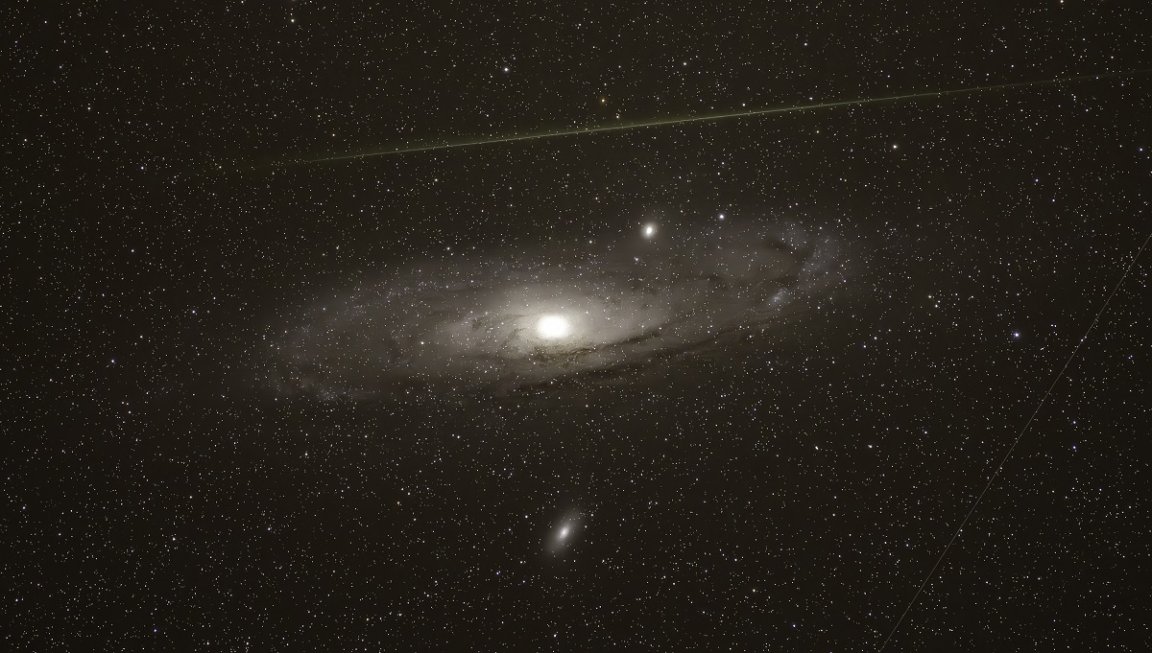
Like how the Earth keeps the Moon bound on a gravitational tether, our nearest galactic neighbor, the Andromeda galaxy (M31), is surrounded by a bunch of tiny satellite galaxies.
But there’s something incredibly strange about how these mini realms are arranged, according to a new study published in the journal Nature Astronomy: almost all the satellite galaxies appear on one side of its host, and are pointing right at us — the Milky Way — instead of being randomly distributed.
In other words, it’s extremely lopsided. Based on simulations, the odds of this happening are just 0.3 percent, the authors calculate, challenging our assumptions of galactic formation.
“M31 is the only system that we know of that demonstrates such an extreme degree of asymmetry,” lead author Kosuke Jamie Kanehisa at the Leibniz Institute for Astrophysics Potsdam in Germany told Space.com.
Our current understanding of cosmology holds that large galaxies form from smaller galaxies that merge together over time. Orchestrating this from the shadows are “haloes” — essentially clusters — of dark matter, the invisible substance thought to account for 85 percent of all mass in the universe, whose gravitational influence helps pull the galaxies together. Since this process is chaotic, some of the dwarf galaxies get left out and are relegated to orbit outside the host galaxy in an arrangement that should be pretty random.
Yet it seems that’s not the case with Andromeda. All but one of Andromeda’s 37 satellite galaxies sit within 107 degrees of the line pointing at the Milky Way. Stranger still, half of these galaxies orbit within the same plane, like how the planets of our Solar System orbit the Sun.
Evidencing how improbable this is, the astronomers used standard cosmological simulations, which recreate how galaxies form over time, and compared the simulated analogs to observations of Andromeda. Less than 0.3 percent of galaxies similar to Andromeda in the simulations showed comparable asymmetry, the astronomers found, and only one came close to being as extreme.
One explanation is that there could be a great number of dwarf galaxies around Andromeda that we can’t see yet, giving us an incomplete picture of the satellites’ distribution. The data we have on the satellites we can see may not be accurate, too.
Or perhaps, Kanehisa speculates, there’s something unique about Andromeda’s evolutionary history.
“The fact that we see M31’s satellites in this unstable configuration today — which is strange, to say the least — may point towards many having fallen in recently,” Kanehisa told Space.com, “possibly related to the major merger thought to have been experienced by Andromeda around two to three billion years ago.”
But the most provocative implication is that the standard cosmological model as we know it needs refining. We have very limited data on satellite galaxies throughout the cosmos, since they are incredibly far away and are outshone by the light of their hosts. Maybe, then, the configuration of Andromeda’s dwarf galaxies isn’t anomalous at all.
“We can’t yet be sure that similar extreme systems don’t exist out there, or that such systems would be negligibly rare,” Kanehisa told Space.com.
It’s too early to draw any hard conclusions, but one thing’s for certain: we need more observations and data on not just Andromeda’s satellites, but on the satellites of much more distant galaxies as well.
More on space: An AI Identifies Where All Those Planets That Could Host Life Are Hiding